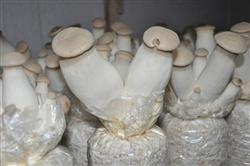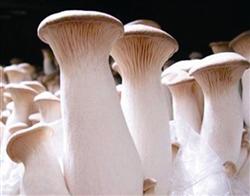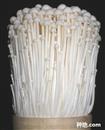How to cultivate Pleurotus eryngii with bag material for high yield

How can Pleurotus eryngii cultivated with bag material produce high yield? Pleurotus eryngii is a large fleshy umbrella fungus with good quality, which belongs to Pleurotus ostreatus, Pleurotus ostreatus and Pleurotus ostreatus. Fruit body solitary or group, thick meat, slow umbrella opening, dense mushroom stalk tissue, snow-white thick, few spores, long shelf life, different from ordinary Pleurotus ostreatus, delicious taste, high sugar content, rich nutrition, excellent taste. In recent years, our field has carried out many experiments, demonstration and production observation. It shows that the production cycle is short, the market prospect is broad, the benefit is high, and the farmers are easy to accept. In this paper, the high-yield cultivation techniques of Pleurotus eryngii with bag material are introduced as follows: 1. Section: the optimum temperature of Pleurotus eryngii is 11-16 ℃, and it is difficult to form fruiting body if the temperature is too low or too high, so the cultivation season must be arranged according to the local climatic conditions and the required temperature for mushroom production, and the suitable local temperature is late autumn and early winter. 2. Raw materials and formula: there are many suitable growth substrates for Pleurotus eryngii, such as sawdust, cottonseed hull, bagasse, corncob, bean stalk, waste cotton and so on. Two formulations of culture are introduced for use. (1) 30% of sawdust, 50% of cottonseed hull and 20% of wheat husk; (2) 15% of sawdust, 70% of cottonseed hull and 15% of wheat husk. The above formulas each add 2% of light calcium carbonate or 1% of quicklime. 5%. Local growers can match different raw materials according to local conditions. 3. Mixing and bagging: the culture material is weighed in proportion, the water content is controlled at about 60% 55cm 65%, and the bag can be bagged after mixing evenly, and the bag material is bagged with a bagging machine. Each bag weighs about 3.2 to 3.4 jin. 4, sterilization and inoculation: immediately after bagging, keep the stove at atmospheric pressure 100 ℃ for 25 hours, high pressure 1.5 for 3 hours, the culture medium after sterilization, wait for the material temperature to drop to room temperature, and then disinfect and inoculate. Inoculators should strictly do a good job in all kinds of disinfection work, keep bacteria at room temperature about 25 ℃ after inoculation, if the temperature is low and the bacteria go slowly, miscellaneous bacteria will occur if the humidity is too high. When the hyphae reach the big mouth of the bowl, they can be transferred to the sterilized mushroom house for management. 5. Cultivation management: when the mycelium of Pleurotus ostreatus grows in the whole bag, it can be adapted to the temperature and humidity to ensure its mushroom production, the temperature of the cultivation room can be maintained at 12: 18 ℃ and the humidity is maintained at 90% 95%. Some water can be sprayed into the space and the ground. Generally, mushroom buds can appear after 10 to 15 days. It is better to open the bag between the formation of the primordium and the appearance of the small mushroom bud, the speed of the present mushroom bud is closely related to the temperature, the temperature is 12: 16 ℃, and the time of opening the bag is too early will affect the quantity and quality of the mushroom, it is appropriate to choose when the mycelium is not twisted, in order to prolong the shelf life of the entity, it is better to control the humidity at about 800.85% 2-3 days before harvest, and attention should be paid to not spraying water on the mushroom body in the management process. Especially when the temperature is high, it will lead to the yellowing of mushroom body and the emergence of contaminated bacteria. If the fruiting body is larger, the bag will appear deformity, serious will appear atrophy, rot, so the cultivation of Pleurotus eryngii should grasp the primordium to form a small mushroom bud. (1) temperature control: the temperature of mushroom room directly affects the formation of primordium and the growth of fruiting body, when the temperature is lower than 8 ℃, the primordium is difficult to form, when the temperature rises to 12 ℃, the original growing fruiting body grows rapidly, the quality decreases, but the small mushroom bud stops growing, begins to atrophy, and the primordium stops differentiation; when the temperature lasts more than 21 ℃, the original fruiting body will soften, atrophy and rot, and the surface group of culture medium will also shrink and rot. In the whole cultivation management, the best temperature of mushroom house was controlled at 12-18 ℃. (2) humidity control: the humidity of the mushroom room should be kept at 85% 95%. If the humidity is too low, the fruiting body will shrink and stop growing, while the primordium is dry and undifferentiated; be careful not to spray directly on the fruiting body when watering, otherwise the fruiting body will turn yellow and affect the quality. in serious cases, it can cause decay. (3) Air conditioning: fresh air is needed in the development stage of fruiting body, the mushroom room should be ventilated frequently, it is difficult for poor ventilation fruiting body to develop normally, the small fruiting body shrinks and stops growing, and some fruiting bodies become atrophic, and then the deformed mushrooms differentiate into dendrites on the shrunken fruiting body, which can not develop into normal fruiting body. If you encounter high temperature and humidity again, it will cause the fruit body to rot. Therefore, the mushroom room must be well ventilated. Harvest and processing: when the mushroom cover is open and flat, the spores have not yet ejected for the appropriate harvest time. According to the harvest standard, the export requires small cover and thick stalk, and the yield of each bag is 70% to 80%. The first tide can be harvested about 15 days after harvest. Click to get more cultivation techniques of Pleurotus eryngii
- Prev

How to cultivate Pleurotus eryngii in winter and spring?
How to cultivate Pleurotus eryngii in winter and spring? Please introduce the cultivation of Pleurotus eryngii in winter and spring, which is not only easy to produce high yield, but also the mushroom meat is thick, tender, delicious and nutritious, so it is very popular among consumers. The main techniques for high yield cultivation of Pleurotus eryngii in winter and spring are as follows: first, the cultivation time from sowing to mushroom production takes about 50 days ~ 6.
- Next

What should be paid attention to in cultivating Flammulina velutipes?
How to raise the golden needle aunt? Please guide the "three-word formula" of mushroom cultivation-- good, early and skillful. The first is the word "good", which is the premise and foundation, that is, we must first cook the mushrooms and pick up the bacteria, grasp every process, and his strain is the best every year; the second is the word "early", that is, to catch up with others.
Related
- Fuxing push coffee new agricultural production and marketing class: lack of small-scale processing plants
- Jujube rice field leisure farm deep ploughing Yilan for five years to create a space for organic food and play
- Nongyu Farm-A trial of organic papaya for brave women with advanced technology
- Four points for attention in the prevention and control of diseases and insect pests of edible fungi
- How to add nutrient solution to Edible Fungi
- Is there any good way to control edible fungus mites?
- Open Inoculation Technology of Edible Fungi
- Is there any clever way to use fertilizer for edible fungus in winter?
- What agents are used to kill the pathogens of edible fungi in the mushroom shed?
- Rapid drying of Edible Fungi

